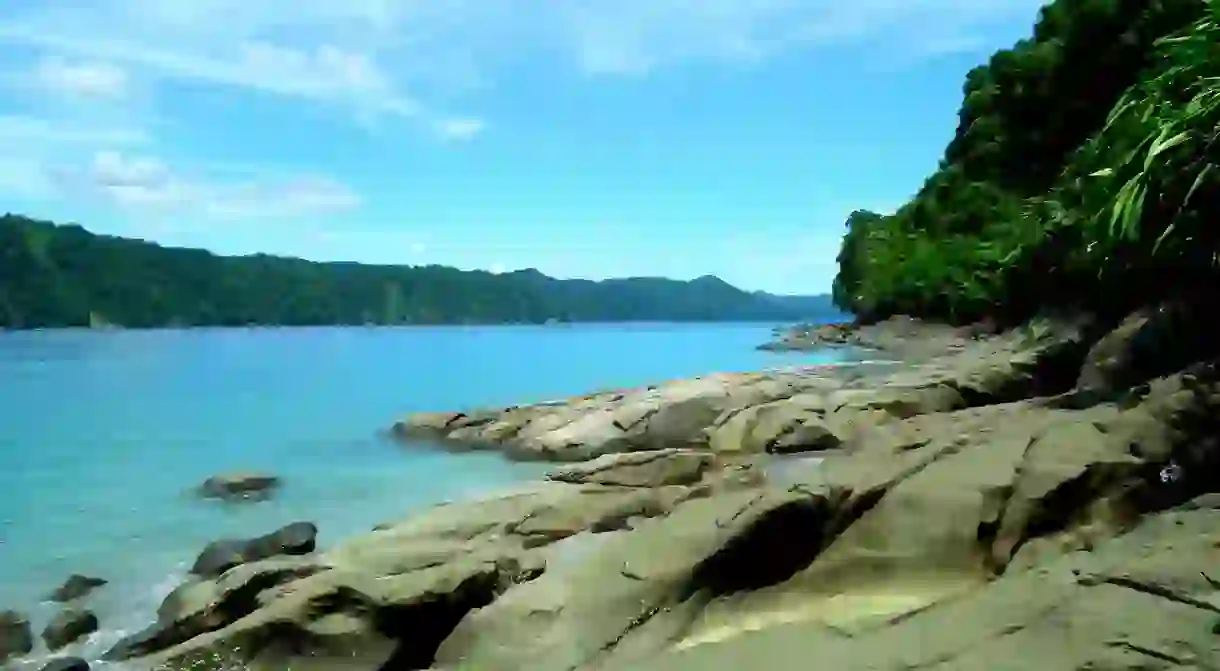11 Beautiful Colombian National Parks Beyond Tayrona

Tayrona National Park is probably Colombia’s most famous spot for international travellers, who flock to the Caribbean coast for its stunning beaches, wild jungle and easy accessibility. However, Colombia’s national park network is extensive—these are the 11 Colombian national parks you need to visit that aren’t Tayrona.
Serranía de la Macarena
Home to one of Colombia’s most iconic natural destinations, the red river of Caño Cristales, La Macarena National Park is located in the country’s Meta Department. Besides its famous ‘River of Five Colours’, La Macarena’s ecosystems—rainforest, savannah and scrubland—are home to around 550 species of birds as well as large mammals such as jaguars and giant anteaters.

Los Nevados
This Andean national park is dominated by the 5,300-metre (17,400-foot) high Nevado del Ruiz glacier-covered volcano and is one of Colombia’s most visited national parks. Visitors can trek up to the glacier of Santa Isabel, one of the seven other volcanos, as Ruiz is still very active and therefore off-limits. The park has important populations of Andean wax palms, as well as endemic bird species like the Fuertes’s parrot, yellow-eared parrot and Buffy Helmetcrest hummingbirds.

Chingaza
Another high-altitude Andean national park, Chingaza is one of the most important protected páramo ecosystems in the world (a páramo is a high-altitude moorland ecosystem found mostly in the northern Andes). Chingaza is located just outside Bogotá and can easily be visited on a day-trip from the capital. With many beautiful lakes and elfin forests, it’s also the best place in Colombia to observe spectacled bears in the wild, as well as white-tailed deer and many bird species.
Sierra Nevada del Cocuy
With more than 12 peaks topping 5,000 metres (16,400 feet), El Cocuy National Park is perhaps Colombia’s most extensive high-altitude, mountainous national park. Located in the eastern cordillera of the Colombian Andes, the park was closed for many years but has recently reopened over 50 kilometres (31 miles) of trekking trails to any visitors who fancy some hiking in one of the country’s most beautiful and off-the-beaten-path parks.

Isla Gorgona
Gorgona is one of the most dramatically beautiful national parks in Colombia: a wild, wave-swept Pacific island, which was once the home of one of Colombia’s most brutal maximum security prisons, is now a remarkably biodiverse protected park. The island contains many species of snakes, as well as endemic lizards and birds. However, the real magic of the island is the remarkable diving: visitors can explore the reefs and dive with hammerhead sharks, whale sharks and even humpback whales!
Utría
Another stunning Pacific coast national park, Utría is a vast protected region of wild jungles and rocky coastline located between the towns of Bahía Solano and Nuquí. A network of hiking trails will reward visitors with amazing views of rare birds and amphibians, as well as several species of monkeys. Some trails run through the park’s protected mangrove ecosystems and from June to October, humpback whales can be seen in the warm blue waters of the park.

Macuira
Macuira is a small protected mountain range deep in the coastal desert of the Guajira. Jutting out from the heart of the flat desert to a height of nearly 900 metres (2,953 feet), the park is rarely visited but is home to some of Colombia’s most dramatic landscapes—vast rolling sand dunes sit alongside forested mountain peaks in the desert. There are even cloud forest ecosystems due to the relative humidity caused by the proximity to the trade winds of the Caribbean.
El Tuparro
El Tuparro is one of Colombia’s largest yet least visited national parks in the far eastern region of Vichada on the border with Venezuela. Getting there can be tricky but the rewards are huge: vast, untouched savannahs and jungles are bordered by the mighty Orinoco River and overlooked by the rocky hills of the Guiana Shield, one of the oldest geological formations on the planet. You can also see wild Pink River dolphins and the majestic Maipures Rapids.

Corales del Rosario y San Bernardo
Forget Tayrona. Corales del Rosario y San Bernardo is, in fact, Colombia’s most visited national park and sees hundreds of thousands of visitors every single year. It’s located less than 50 kilometres (31 miles) from Cartagena and most of the park is actually underwater: it protects some of Colombia’s most important coral reef ecosystems, as well as many species of fish and marine creatures. The Rosario Islands are a beautiful part of the park and one of the reasons why so many people visit each year.
Serranía de Chiribiquete
Colombia’s largest national park is also perhaps its most stunning and most difficult to visit. Though technically closed to the public, some tour companies offer expensive flyover packages so that travellers get the chance to experience what has been called ‘The Real Lost World’. A vast jungle park interspersed with wild rivers and giant tepui rock formations, Chiribiquete is home to some of the oldest rock paintings on the continent, as well as (supposedly) Indigenous peoples who’ve yet to have contact with the outside world.

Puracé
A high-altitude páramo located near the southern city of Popayan, Puracé is actually the name of the large volcano which dominates the national park and can be climbed by adventurous visitors. Those who want less extreme activites can visit the park’s natural hot springs, trek to waterfalls and mountain lakes or observe the park’s small, but important, population of the rare Andean condor.













